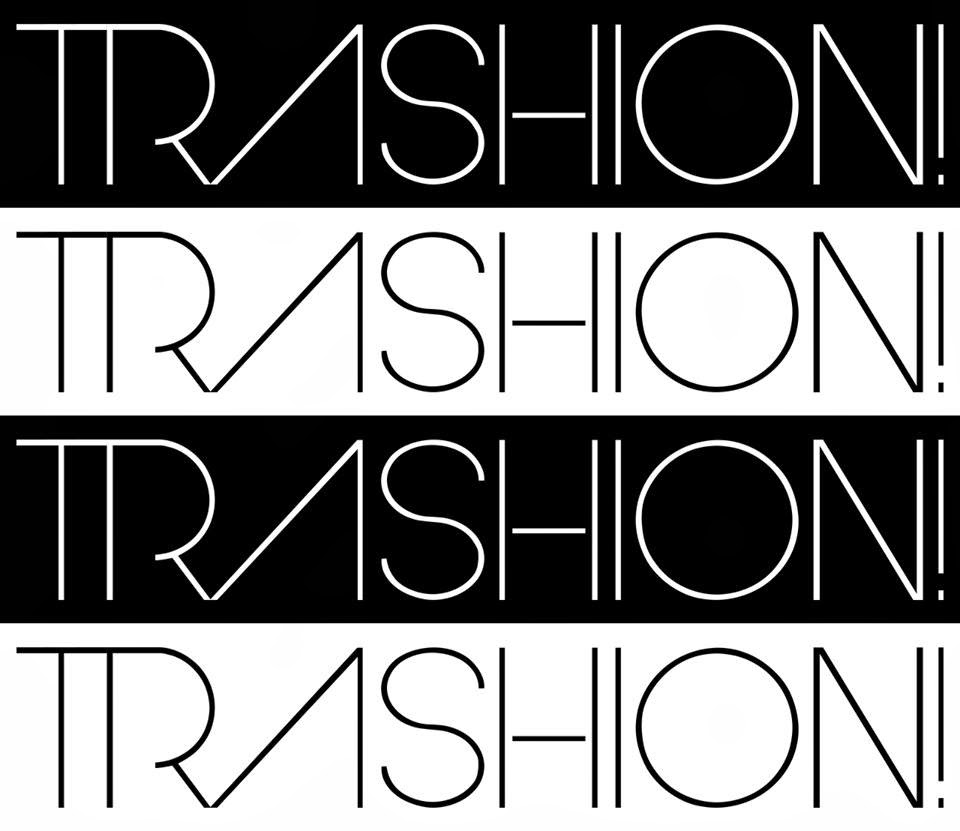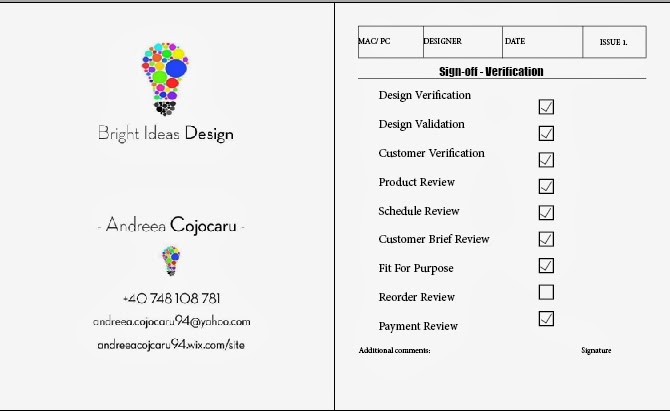The concept of the logo was to keep it simple but interesting. I chose the black & white combination mainly because it looks fashionable, but at the same time it is regarded to my target audience.
Wednesday, March 26, 2014
Magazine in a day - TRASHION!
For the photo I used on cover I edited the contrast and I added a light filter. For the title, 'TRASHION!', I used two fonts: Arual and Dolce Vita Light. I duplicated the layout three times and I repositioned to create a dynamic view upon the title. For the title I used Cyan and Magenta. I put the main three articles in the left on the cover in order to highlight the subject of the magazine. Magenta, Cyan and Yellow are the colours used for the articles and I used Arual font. I combined the two fonts because they are very similar, using Illustrator. I redesigned the letters into a type which I like more and I would see it as a front cover type. The whole concept was to create a new dynamic, modern look to preserved the fashion and teen spirit.
 I created the layout design for content to fit for the main subject. The font and colours are the same as in the title, yet I created a symmetry. I created the ribbons to insert the number of the pages and to write the topic of them. I kept the ribbons for design on the entire magazine. I do believe that these create a youth fashionable look, especially for my target audience.
I created the layout design for content to fit for the main subject. The font and colours are the same as in the title, yet I created a symmetry. I created the ribbons to insert the number of the pages and to write the topic of them. I kept the ribbons for design on the entire magazine. I do believe that these create a youth fashionable look, especially for my target audience.
I used this photo to introduce the article and I kept the ribbon to show the title. The font used on the text is Helvetica Neue LT STD Thin to enhance the visibility for the reader.
To introduce the article I added the title on a ribbon. I used two grids in order to make the article easily to follow. I inserted the picture into the main text to break the text's line.
The next part of the magazine is highly connected with the previous pages. I kept the layout but I inserted the illustration to introduce the article. From my point of view, the illustration can be a clue about the text's subject, yet it can make the reader curious.
For this article I kept the concept of the previous pages, but I changed the colour of the title, thus making the magazine more interactive and to fit for my target audience. I used two columns and the font and size are the same.
To create a dynamic look for the magazine I put the final part of the previous article on other part. I inserted two pictures in order to theory up the text. For the next article 'how to Shorts' I used different alignments but I kept the main concept.
For the final part I used the same type of ribbon as the one from the first article to create symmetry. I broke the grids with some helpful images, following the written tips and demonstrating them through images.
Experiments with type, shape, colour, photography, layout
For this week I tried to create a magazine page using grids, colours and photography. I coloured the grids and I created a green polygon to write the name of the article inside it (font - Gotham - applied stroke). I broke the grids with the polygon and the photo which I sent it to back. For article text I used Futura Maxi CG Black font.
Grid Layout Case Studies
This layout is very interesting because it formats the articles in an appealing way, capturing the interest because of its unique style. The creativity aspect is created by applying images that fit with the article. All the columns are incorporated with the wheels and the text provides various shapes which give rhythm to the overall design. The grids create tension as they are divided in five main columns broken by images. Even the grids that are not broken by images are divided by titles with different sizes. I do consider that despite the fact that the page looks very interesting it is very complicated to follow the article.
This article is very interesting because of the fact that every grid is actually a letter or an extension of it. There can be seen the newspaper's title in the main article. The text can be read easily even if the grids are broken so many times. There are 2 grids in total, but the structure is divided into 3 parts, yet the article does not have a symmetry.
Breaking the Grid
For my first experiment I create a simple appearance to introduce a quote in the middle of the article. I used the same font for every column, but I changed the size for the centre quote. The main article font is 18 pt., whereas the quote has 24 pt.
For my second experiment I used a yellow square in order to highlight the quote. I also put it in the middle of the page to capture the attention. By placing there the most interesting quote I tried to make the reader curious to read the whole article.
For the third experiment I used a brown square to create a contrast between the article and the quote.
For the final experiment I used a red polygon in order to create an interesting overview. I liked the way that the text fits every corner of the polygon and I used white colour for the inside text to make a connection with the article, creating a light contrast.
Grid Layouts

Working Abroad

I chose as a cover a photo that express the theme - Working Abroad- For the title I used Stroke in order to be visible. For the logo I used Papyrus - Regular- font and for the title I used Book Antiqua font. The colour - blue- I do believe that expresses the distance and it gives a feeling of depression, yet I used it to create a connection between readers and people who actually Work Abroad.
First and second pages are containing the main article. I used a the photo to create an understanding for readers and to express the message of the article. I used two columns to make the text clear and I think that the blue circle break the grids in harmony, creating a perfect symmetry.
For the third page I used the same blue circle to introduce the final part of the article. In the circles there can be seen the most important quotes from the article. I used the photo in the left corner of the page because I think that its colours fit the blue circle and express the other part of working abroad: the self satisfaction.
Experiments with type, shape and colour
For this week I explored the shapes by applying images. I created the text by modifying the Vertical and Horizontal Scales.
Subscribe to:
Comments (Atom)






















